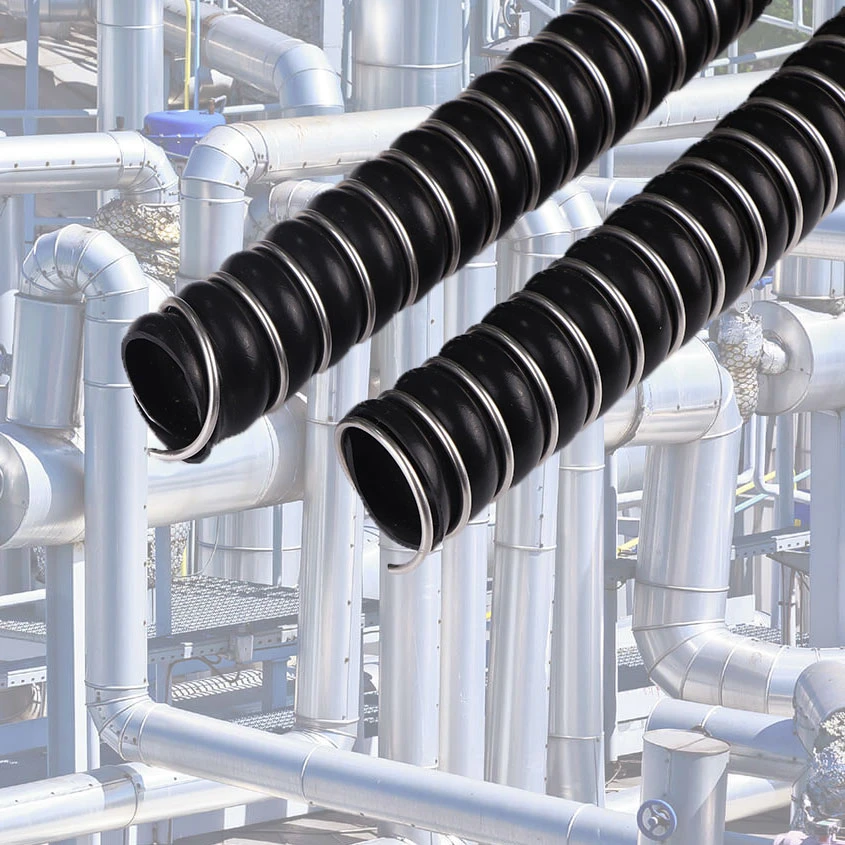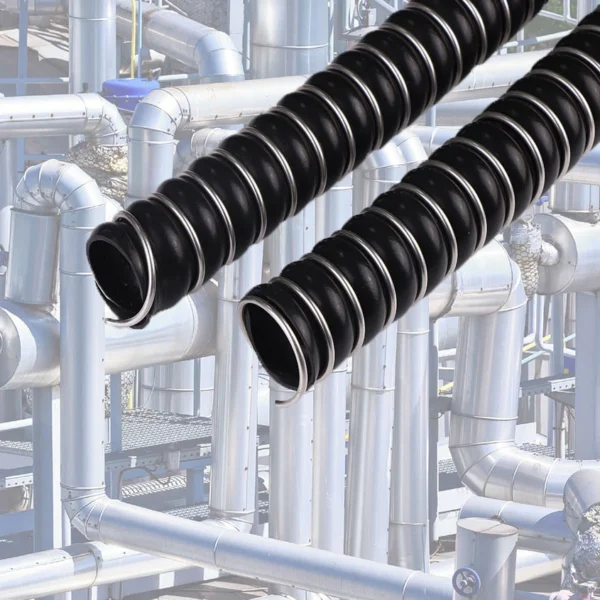Introduction: Addressing Electrostatic Hazards in Industrial Systems
Electrostatic discharge (ESD) poses significant risks in industries handling flammable liquids, gases, or powders. Conductive PTFE hoses are engineered to mitigate these dangers by safely dissipating static charges. This article explores their critical role in preventing explosions, enhancing operational safety, and complying with industrial standards.
Core Properties of Conductive PTFE Hoses
Material Composition and Conductivity
Conductive PTFE hoses incorporate carbon or metal particles into PTFE (polytetrafluoroethylene), achieving surface resistivity below 10⁶ Ω/sq. This ensures rapid static dissipation while retaining PTFE’s chemical resistance and flexibility.
| Property | Conductive PTFE Hose | Non-Conductive Hose |
|---|---|---|
| Surface Resistivity | <10⁶ Ω/sq | >10¹² Ω/sq |
| Temperature Range | -70°C to +260°C | -50°C to +200°C |
| Chemical Resistance | Excellent | Moderate |
| Static Dissipation | ✔️ | ✖️ |
Key Applications in Hazardous Environments
- Fuel Transfer Systems: Conductive PTFE fuel hoses prevent ignition during gasoline or diesel transport.
- Compressed Air Systems: Conductive air hoses reduce fire risks in pneumatic tools and spray-painting operations.
- Coolant Circulation: Flexible coolant hoses and transmission coolant lines ensure static-free coolant flow in automotive and aerospace systems.
Safety Advantages Over Non-Conductive Alternatives
Preventing Explosions in Flammable Environments
Static buildup in non-conductive hoses can ignite vapors in oil coolant lines or fuel systems. Conductive PTFE variants eliminate this risk, aligning with OSHA and ATEX directives for explosive atmospheres.
Durability in Extreme Conditions
- Thermal Stability: Withstands temperatures exceeding 250°C, ideal for coolant pipes near engines.
- Abrasion Resistance: Reinforced layers protect against wear in high-pressure transmission coolant lines.
Selecting the Right Conductive Hose
Industry-Specific Guidelines
| Application | Recommended Hose Type | Key Feature |
|---|---|---|
| Chemical Processing | Conductive PTFE fuel hose | Acid/alkali resistance |
| Automotive Cooling | Coolant hose flexible | High-temperature flexibility |
| Pneumatic Systems | Conductive air hose | Anti-static lining |
Compliance and Certification
Ensure hoses meet:
- ISO 8031: Conductivity standards for rubber and plastic hoses.
- SAE J517: Hydraulic hose specifications.
FAQs: Addressing Common Concerns
Q: Can conductive PTFE hoses replace metal pipes in coolant systems?
A: Yes—their flexibility and corrosion resistance make them superior to rigid coolant pipes in dynamic applications.
Q: How often should conductive hoses be inspected?
A: Check every 6 months for abrasions or conductivity degradation, especially in oil coolant line applications.
Conclusion: Prioritize Safety with Conductive Solutions
Conductive PTFE hoses are non-negotiable for industries where static discharge could trigger catastrophic failures. Evaluate your current coolant hose, air hose, and fuel line setups against the latest safety benchmarks. Partner with certified suppliers to implement compliant solutions.
[1] OSHA Guidelines for Explosive Atmospheres
[2] ISO 8031:2018 Rubber and Plastics Hose Standards
[3] SAE J517 Hydraulic Hose Specifications
Teflon X PTFE Hose – Corrugated Flexible Pipe for Machinery
Teflon X PTFE hoses provide unmatched flexibility and strength for machinery, chemical, and digital hardware industries. These corrugated flexible pipes feature a smoother inner wall for improved fluid flow and easy CIP/SIP cleaning. Reinforced for vacuum and high-pressure resistance, this black corrugated hose adapts to custom needs.



